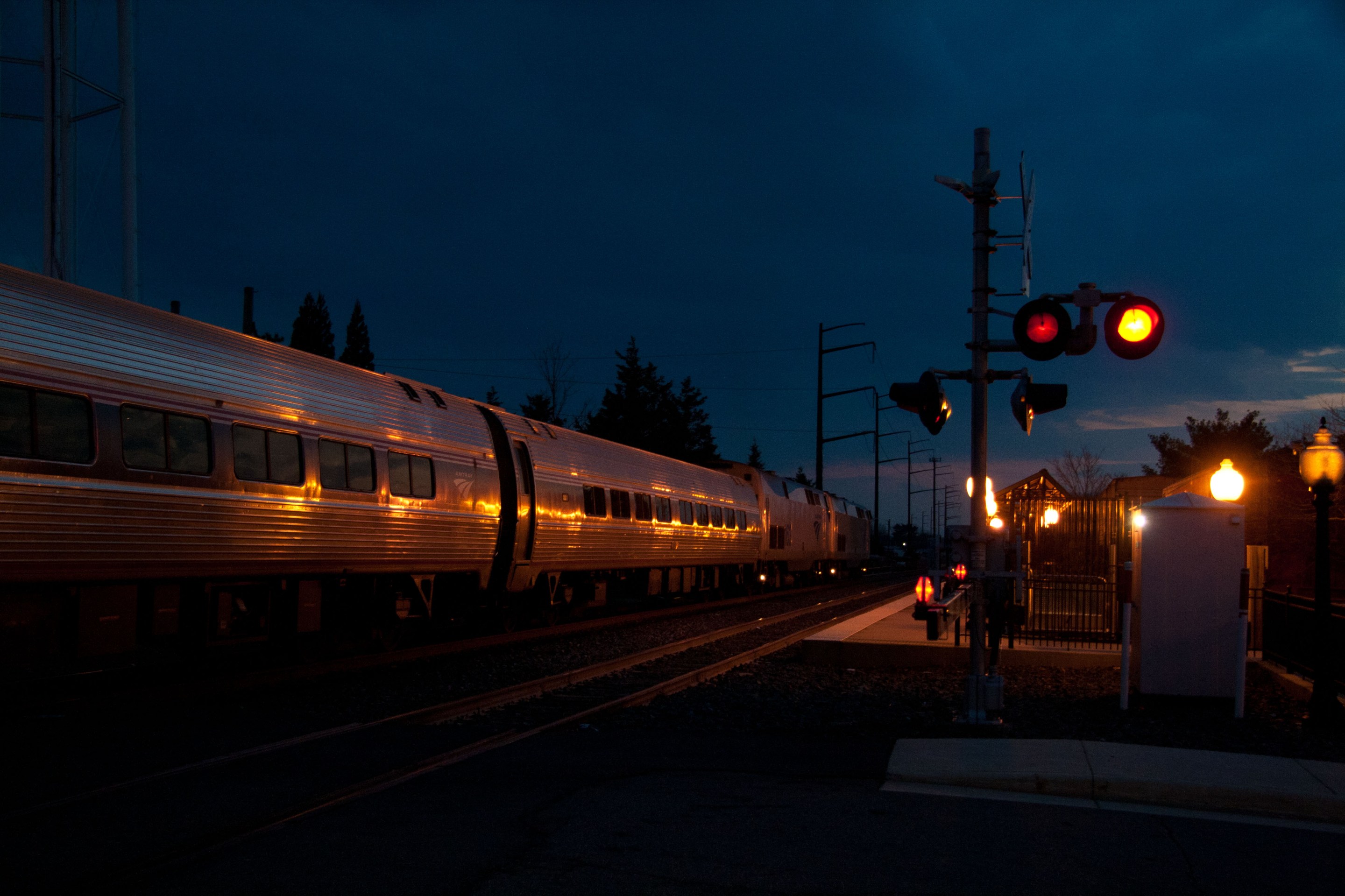Amtrak announced a vision plan late last month to add "millions more passengers" over the next fifteen years on new and existing routes. "President Biden released his American Jobs Plan, including plans for infrastructure investment, economic recovery, climate change, and social equity, and $80 billion designated specifically for rail. Amtrak’s vision to grow rail service and connect new city pairs across America rises to the urgent challenges of our time, and will provide new and improved train service to millions of additional passengers," wrote Amtrak officials.
The railroad's expansion map, which shows planned service improvements throughout the country, includes a new line between San Jose and San Luis Obispo (SLO). There's already track there, used by freight and Amtrak's L.A.-to-Seattle "Coast Starlight." But California's Pacific Surfliner service from San Diego goes only as far north as SLO. And Northern California's Capitol Corridor trains only go as far south as San Jose.
It's still unclear how or when a California regional train would bridge that gap, said Rob Padgette, Managing Director of the Capitol Corridor Joint Powers Authority (CCJPA) and Chair of the State-Amtrak Intercity Passenger Rail Committee (SAIPRC). "That segment is in the California state rail plan as an improvement corridor, but it is neutral on who would be the operator in that corridor... the Amtrak map that came out is really a statement about what rail can be in the country."
Meanwhile, the Europeans are rolling out more and more overnight sleeper trains in an effort to curb emissions on corridors that take too long, even at high speeds, to compete with airplanes. The latest addition will run overnight between Brussels and Berlin. As reported in the International Railway Journal, "The service will be the second to connect the Belgian and German capitals, after European Sleeper also announced that it will introduce an international night train service from Brussels via Antwerp, Rotterdam, Amsterdam, Berlin and Dresden to Prague around the same time." This comes on the heels of a large expansion of overnight "NightJet" trains operated by the Austrian National Railway, OBB. All of these night trains offer the ability to have a drink, crawl into a cozy bed, and wake up at one's destination in the morning.
Amtrak is getting in on this game. This month it added private sleeping accommodations on an overnight train between Washington D.C. and Boston. One boards at Washington Union Station at 10 p.m., arriving at Boston's South Station at 7:58 a.m. Passengers are given a free drink as they board and get breakfast in bed on the other end. As Amtrak's marketing says about overnight service: "Instead of catching a red-eye, get some shut-eye."
The Coast Starlight, Amtrak's L.A.-to-Seattle train, takes about eleven hours to travel between Oakland and Los Angeles. That's on par with Amtrak's overnight service between D.C. and Boston, and with the services in Europe. But it runs between Oakland and L.A. during the day.
With the Coast Starlight only running three days a week now because of the COVID cutbacks, perhaps a way to ramp service back up would be to shift its schedule by twelve hours every other day, so a train that arrived in L.A. at 9 p.m. from Seattle on Tuesday would return the next day at 9 p.m. instead of 10 a.m. Thursday. In other words, alternate morning and nighttime departures to create an overnight L.A./Oakland service without additional expense.
If it proves popular, extra trainsets could be dedicated to LA-Bay Area overnight service as the COVID crisis subsides. The state could use existing Amtrak sleepers. If it wants new trains, Austria's "NightJet" service equipment (see photo below) is made by Siemens, which has a factory in Sacramento. Amtrak is already buying locomotives and passenger cars from this facility. Streetsblog imagines Siemens would be amenable to running off a few units with NightJet-style sleeping interiors for overnight service.
The idea of running an overnight service between Northern and Southern California is not new. There was an overnight Amtrak service that was discontinued in 1983 by Republican Governor George Deukmejian. There was also the short-lived Cabin Bus service, a bus full of cots that did an overnight run, but it was done in by the comfort limitations of rubber tires on asphalt.
But, according to Padgette, California isn't looking at reviving overnight rail service--at least not yet.
"Traveling on Amtrak is up to 83 percent more energy-efficient than driving and up to 73 percent more energy-efficient than flying," writes Amtrak in its fifteen-year vision plan. It's also 100 percent more time-efficient if one sleeps through the journey. Some day High-Speed Rail will offer a fast alternative to flying between Los Angeles and the Bay Area. But, in the near term, what could get more people out of planes and into trains between LA and San Francisco than an overnight service that lets passengers sleep--in a real bed--through the trip, arriving refreshed in downtown for their morning meetings?
And what could be an easier lift than an overnight train using existing infrastructure between the Bay Area and Southern California?






